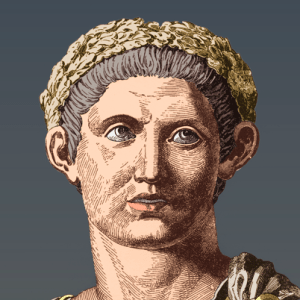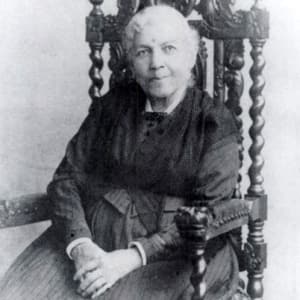
Constantine I
Constantine I was a Roman emperor who ruled early in the 4th century. He was the first Christian emperor and saw the empire begin to become a Christian state.
Synopsis
Constantine I was born circa 280 in Naissus, Moesia (now Niš, Serbia). His father became the Western Roman emperor in 305; after his father's death, Constantine fought to take power. He became the Western emperor in 312 and the sole Roman emperor in 324. Constantine was also the first emperor to adhere to Christianity. He issued an edict that protected Christians in the empire and converted to Christianity on his deathbed in 337.
Early Life
Flavius Valerius Constantinus, who would become Roman emperor Constantine I, was born on February 27, circa 280 (sources range from 272 to 284), in Naissus, Moesia (now Niš, Serbia). His father, Flavius Valerius Constantius, was an officer in the Roman army. Constantine's mother, Helena, was from humble beginnings; it is unknown whether she was the wife or concubine of Constantius.
In 289, Constantine's father left Helena to marry the stepdaughter of Maximian, the Western Roman emperor. Constantine's father was elevated to deputy emperor under Maximian in 293. Constantine himself was sent to the court of Diocletian, the Eastern Roman emperor. There, Constantine was educated in Latin and Greek. He likely also witnessed the persecution of Christians.
In 305, following Maximian's abdication, Constantine's father became Emperor Constantius I. Constantine then joined his father on a military campaign and fought alongside him in Britain. The next year, Constantius died at Eboracum (now York). Constantine was declared emperor by his troops. To make the designation official, he began to fight for power.
Rise to Power
During a period of civil war, Constantine defended his position against different Roman factions, including Maxentius, Maximian's son. In 312, Constantine fought in Italy, meeting Maxentius and his forces at the Milvian Bridge on the Tiber River. Accounts of Constantine's life state that, following a vision, he had ordered a Christian symbol to be painted on his soldiers' shields. Under this emblem, Constantine was successful in battle and entered Rome.
Constantine now became the Western Roman emperor. He soon used his power to address the status of Christians, issuing the Edict of Milan in 313. This proclamation legalized Christianity and allowed for freedom of worship throughout the empire.
For a time, Constantine stood by as others ruled the Eastern Roman Empire. In 316, Licinius, who had been sharing power with Maximinus, became the only Eastern emperor. In 324, Constantine defeated Licinius and took control of a reunited empire. After this triumph, Constantine founded the city of Constantinople on the site of Byzantium.
Sole Roman Emperor
Constantine continued to proclaim his adherence to Christianity, and his reign established influence over religious conflicts within the church. Not wanting questions about the divine nature of Christ to sow discord, Constantine summoned church officials to the Council of Nicaea in 325. Out of this came the Nicene Creed, which affirmed that Jesus was a divine being.
While in power, Constantine issued reforms intended to strengthen his regime. One such reform was a reorganization of the army, which helped Constantine when he faced tribes such as the Visigoths and the Sarmatians.
Constantine was in Helenopolis, planning a campaign against Persia, when he fell ill. He set out to return to Constantinople, but grew worse and was forced to halt his journey. He had delayed his baptism—a common practice at the time—but now underwent the rite. Constantine died on May 22, 337, in Ancyrona, near Nicomedia, Bithynia (modern day ?zmit, Turkey), at the approximate age of 57. He was buried in Constantinople at the church of the Apostles.




